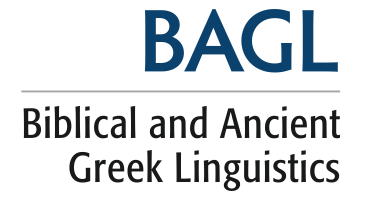5.1 | Alexander Andrason and Christian Locatell Stellenbosch University, South Africa The challenge of reconciling a verbal form’s variety of senses on the one hand
and its conceptual coherence on the other is solved, not by positing a highly
abstract, semantically invariant core from which each use is derived, nor by simply
constructing taxonomies of contextually conditioned senses with “exceptions.” Rather
a form’s senses can be arranged diachronically along cross- linguistically
consistent and cognitively motivated paths of change from which it becomes apparent
that each sense has a direct conceptual relation only to adjacent senses on the path
of change. These senses are synchronically organized in terms of prototypicality and
fall along a semantic-pragmatic continuum according to conventionalization.
Furthermore, senses previously thought of as “exceptional” are also conceptually
related, but only indirectly via their common relationship to the overarching path
of change. Keywords: Koine Greek, verbal system, cognitive linguistics, perfect tense-form,
semantics, pragmatics, grammaticalization |
5.2 | James A. Libby McMaster Divinity College, Hamilton, ON, Canada The pruning of the Pauline Canon is considered one of the signal achievements
of contemporary New Testament studies. Quite intriguingly, however, no consensus on
the Pauline Canon exists among researchers who have actually executed quantitative
studies of style in the Greek New Testament (GNT). From the perspective of
functional linguistics, no study in the GNT has been executed that uses a
linguistically comprehensive set of measures for either the syntagmatic structures,
paradigmatic systems, multiple strata or multiple metafunctions of the GNT. In this
study we will pursue an approach that, for the first time, visually compares and
contrasts these three dimensions in some depth. The advantages of such an approach
are its (1) comprehensive selection of linguistic measures across six representative
syntagmatic ranks in the GNT, (2) use of two data- driven (rather than ad hoc)
feature-selection methods, (3) use of multiple extractive multivariate techniques
(correspondence analysis and multiple correspondence analysis) which provide highly
interpretable visualizations of the data, and (4) use of a formal experimental
design methodology that explores each level of linguistic rank. This study proposes
that such an approach provides a meaningful next step to the work of Neumann and
Mealand in particular, and that the tighter integration of linguistics and
multivariate visualization combines to provide new insights into the textual
boundaries of the Pauline Canon. Keywords: Pauline Canon, Authorship, Genre, Pseudepigraphy, Systemic Functional
Linguistics, Style, Computational Stylistics |
5.3 | Ronald Dean Peters Great Lakes Christian College, Lansing, MI, USA Daniel Wallace, in a review of Ronald D. Peters’ The Greek Article: A
Functional Grammar of ὁ -items in the Greek New Testament with Special Emphasis on
the Greek Article, published in the Review of Biblical Literature, not only
challenges Peters’ proposed grammar of the Greek article, but also the scholarship
behind the theoretical model. The following is a response to Wallace’s review in
which the debate between Peters and Wallace is located in the context of the general
characteristics of paradigm shifts in science and scholarship. The presentation
relies primarily on Thomas Kuhn’s The Structure of Scientific Revolutions. The
thesis of the following response is that, using Kuhn’s framework and terminology,
the debate between Peters and Wallace is characteristic of the conflict that
inevitably arises between the novel theory and normal science,
respectively. Keywords: Greek Article, Novel Theory, Normal Science, Scientific Revolution, Biblical
Scholarship, Paradigm Shift, SFL |

